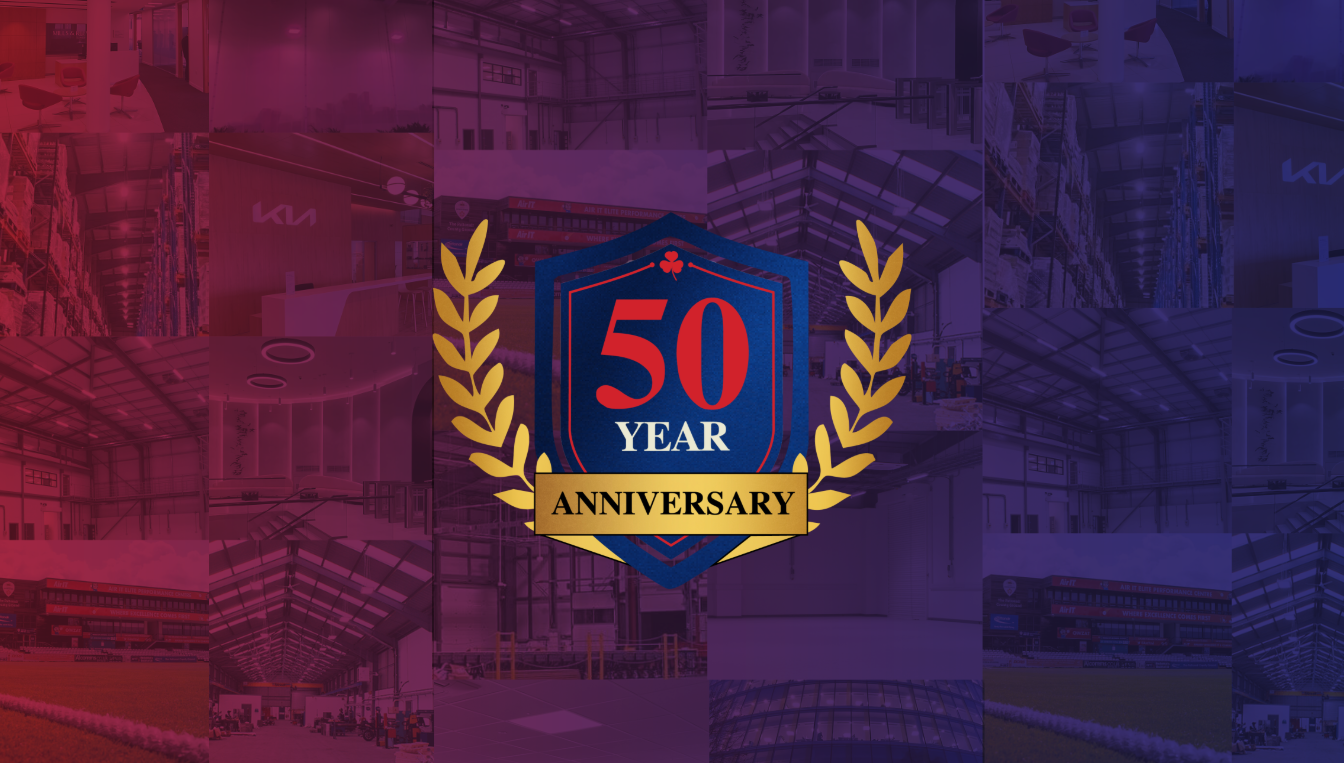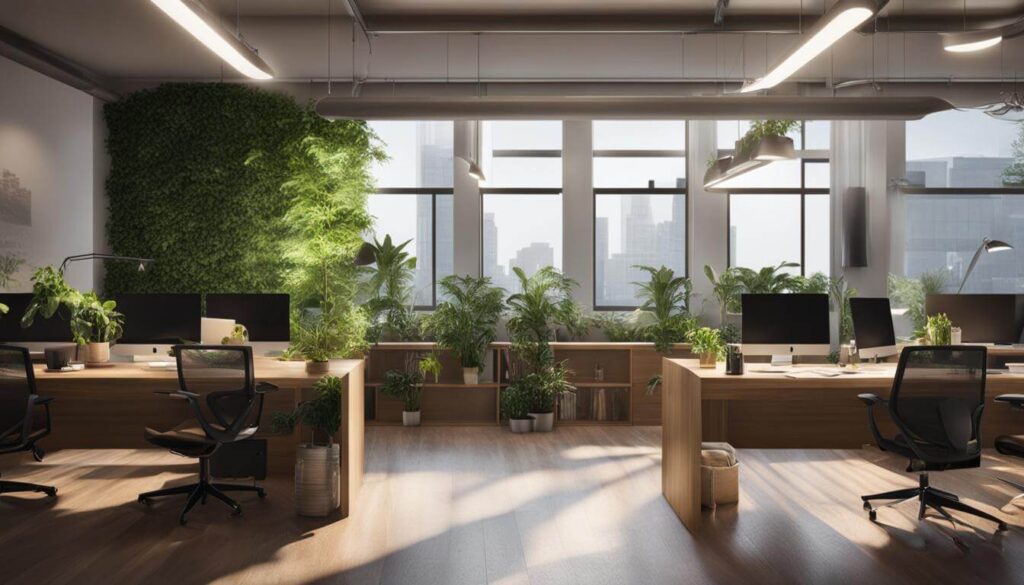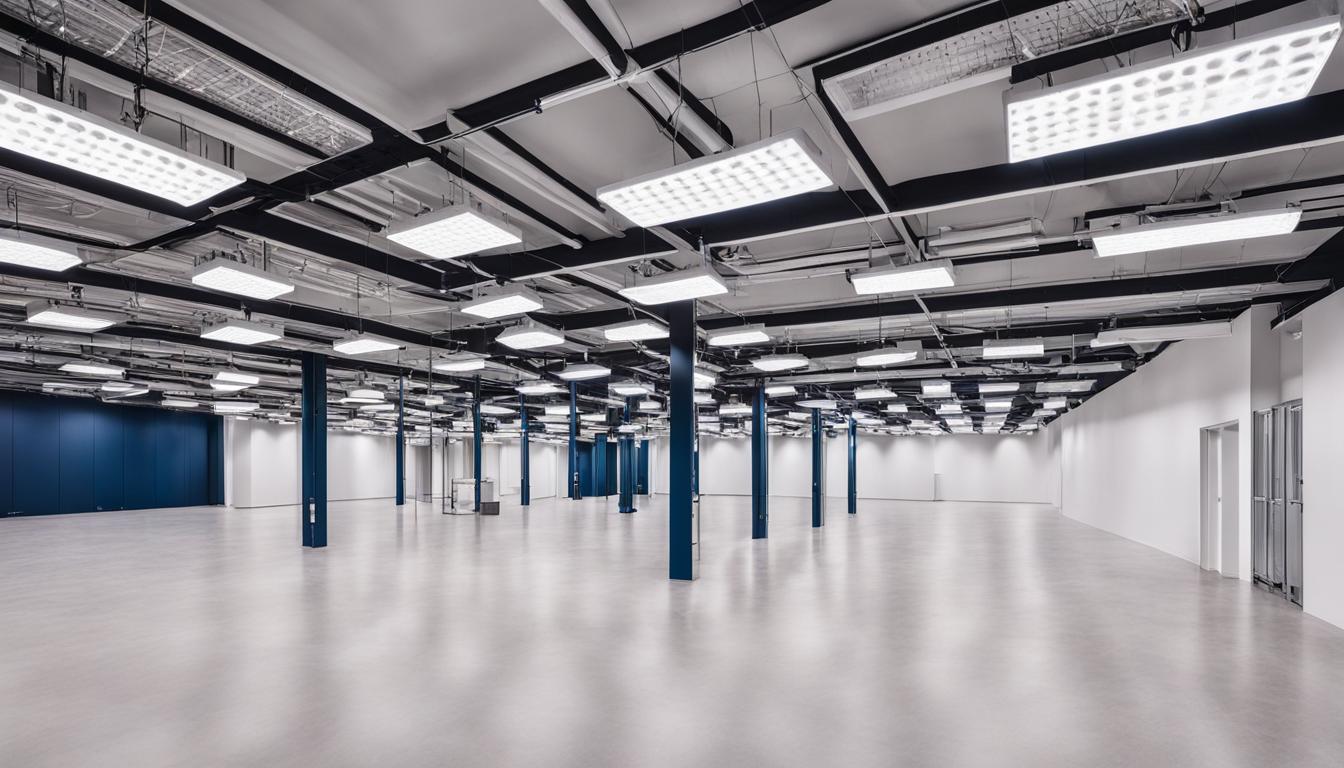Light shelves are horizontal surfaces placed below windows to bounce natural light onto the ceiling, which then disperses the light evenly across the room. They can significantly reduce the need for artificial lighting during daylight hours, leading to energy savings and a more sustainable lighting strategy.
Prismatic panels, on the other hand, utilize advanced optical technology to capture and transmit natural light with minimal loss. These panels are designed to distribute incoming sunlight evenly throughout the building, maximizing daylight utilization and reducing the reliance on artificial lighting sources.
How Light Tubes Transform Building Interiors
Light tubes, also known as tubular daylighting devices (TDDs), are another innovative daylighting system that brings natural light deep into building interiors. They consist of a highly reflective tube installed between the roof and the ceiling, with a diffuser at the end to disperse the sunlight.
Light tubes capture sunlight from the roof and transport it through the reflective tube, ensuring that natural light reaches even the most interior spaces of a building. This technology effectively eliminates the need for traditional artificial lighting during daytime hours, resulting in significant energy savings and reduced environmental impact.
Light tubes are particularly beneficial in areas where windows or skylights cannot be installed. They provide a cost-effective and sustainable solution for illuminating corridors, hallways, bathrooms, and other spaces that are typically devoid of natural light.
In summary, daylighting systems like light shelves, prismatic panels, and light tubes are revolutionizing modern architecture by maximizing the utilization of natural light. As architects and designers increasingly prioritize sustainable lighting strategies, these systems play a vital role in reducing energy consumption, enhancing occupant well-being, and creating visually stunning spaces that embrace the power of daylight.
Key Benefits of Balancing Natural Lighting with Artificial Lighting
When it comes to lighting design in architectural spaces, striking the right balance between natural lighting and artificial lighting is paramount. This balance not only creates a visually appealing environment but also brings numerous benefits that enhance both the cost-effectiveness and comfort levels of a space.
Let’s explore some of the key benefits that arise from achieving this optimal balance:
- Cost Savings: Daylight harvesting, the practice of utilizing natural light to reduce dependency on artificial lighting, can lead to significant cost savings. The use of natural light during daylight hours reduces electricity consumption, resulting in lower energy bills and decreased operating costs over time. This makes daylight harvesting a cost-effective lighting strategy in the long run, especially in commercial buildings where lighting expenses can be substantial.
- Efficiency: Natural lighting provides a more efficient alternative to artificial lighting. By harnessing daylight, architects and designers can minimize the need for electric lighting during the daytime, reducing the overall energy consumption of a building. This not only maximizes energy efficiency but also contributes to sustainability goals by reducing carbon emissions and environmental impact.
- Maintenance: Compared to artificial lighting, natural lighting requires minimal maintenance. While artificial lighting systems require regular bulb replacements, maintenance inspections, and repairs, natural lighting sources such as windows and skylights generally have a longer lifespan and require less upkeep. This means fewer maintenance costs and a more hassle-free lighting solution in the long term.
- Comfort Benefits: The combination of natural and artificial lighting creates a comfortable and well-lit environment. Natural light provides a connection to the outdoor environment and offers a sense of openness and visual variety. This can improve occupant well-being, productivity, and satisfaction. Additionally, natural light has been shown to boost mood, regulate circadian rhythm, and enhance the overall quality of the indoor space.
By integrating daylight harvesting techniques and carefully balancing natural lighting with artificial lighting, architectural spaces can reap these significant benefits. The cost savings, energy efficiency, reduced maintenance, and enhanced comfort levels make the pursuit of this balance a truly worthwhile endeavour.
Implementing Innovative Lighting Control Solutions
This section explores innovative lighting control solutions that facilitate daylight harvesting. By implementing effective control systems, you can maximize the utilization of natural light in your building while ensuring occupant comfort and well-being. Two key solutions that enable efficient natural light control are automated blinds and smart sensors.
Automated Blinds and Smart Sensors: Maximising Daylight Use
Automated blinds play a crucial role in natural light control. They can be programmed to adjust based on the time of day, season, or the intensity of sunlight entering the building. By automatically adjusting the blinds, you can optimize natural light penetration, reducing the need for artificial lighting and enhancing energy efficiency. This not only helps to create a pleasant and well-lit environment but also contributes to sustainable lighting practices.
Smart sensors are another essential component of innovative lighting control solutions. These sensors detect the amount of natural light available in a space and communicate with the lighting system, enabling it to adjust accordingly. By integrating daylight sensors into your lighting system, you can effectively balance natural lighting with artificial lighting, minimizing energy consumption and maximizing natural light utilization.
Integrating Intelligent Lighting Systems for Energy Conservation
Intelligent lighting systems are a game-changer when it comes to sustainable lighting practices. By combining advanced technology and automation, these systems optimize energy usage while maintaining a comfortable lighting environment. They integrate various components such as daylight sensors, occupancy sensors, and automated controls to continuously monitor and adjust lighting levels.
Daylight sensors detect the natural light available in a space and adjust the artificial lighting accordingly, reducing energy waste. Occupancy sensors identify when a space is unoccupied and automatically switch off lighting to save energy. Automated controls enable you to customize lighting settings, schedules, and preferences, providing flexibility and control over your lighting system.
Integrating these intelligent lighting systems not only saves energy but also enhances the overall efficiency and performance of your lighting infrastructure. It allows for a seamless integration of natural and artificial light sources, promoting sustainability and creating an optimal lighting environment for occupants.
Conclusion
Throughout this article, we have explored the significance of daylight harvesting in achieving sustainable lighting solutions, optimizing natural light, and enhancing the well-being of building occupants. By harnessing the transformative potential of natural light, architects and designers can create environments that are not only visually appealing but also energy-efficient and conducive to occupant productivity and health.
Daylight harvesting offers numerous benefits, including cost-effectiveness, energy efficiency, and reduced maintenance compared to artificial lighting. By utilizing natural light in conjunction with artificial lighting, you can achieve a harmonious balance that maximizes both visual comfort and energy conservation.
Implementing strategies such as proper orientation and placement of windows, skylights, and light wells, as well as the use of daylighting systems, can optimize the distribution of natural light deep into the interior spaces of a building. Additionally, innovative lighting control solutions, such as automated blinds and smart sensors, allow for the efficient utilization of daylight while ensuring occupant comfort.
To create sustainable and well-lit architectural spaces, it is crucial for architects and designers to integrate daylight harvesting techniques in their future projects. By doing so, they will not only benefit from the energy-saving potential of natural light but also contribute to the well-being and satisfaction of building occupants.
FAQ
How does daylight harvesting work?
Daylight harvesting is a lighting strategy that involves using sensors to automatically adjust artificial lighting in response to the available natural light. Daylight sensors measure the intensity of natural light entering a space and communicate with the lighting control system to dim or turn off artificial lights when sufficient daylight is present, optimizing energy efficiency and reducing reliance on artificial lighting.
What are the environmental benefits of daylight harvesting?
Daylight harvesting helps reduce energy consumption by taking advantage of natural light, which lowers the demand for electricity and decreases greenhouse gas emissions. By maximizing the use of sunlight, buildings can significantly reduce their carbon footprint and contribute to a more sustainable future.
How does daylight harvesting compare to traditional lighting systems?
Daylight harvesting outperforms traditional lighting systems in terms of energy efficiency and cost savings. By utilizing natural light, daylight harvesting reduces the need for artificial lighting, resulting in lower energy consumption and utility bills. Additionally, daylight harvesting provides a more comfortable and visually appealing lighting environment for occupants compared to artificial lighting alone.
What are the comfort benefits of daylight harvesting?
Daylight harvesting creates a more pleasant and comfortable environment for building occupants. Natural light has been shown to improve mood, productivity, and overall well-being. By integrating natural light with artificial lighting, daylight harvesting creates a balanced and visually comfortable lighting environment that promotes occupant satisfaction and enhances the quality of indoor spaces.
How can daylight harvesting be implemented in buildings?
Daylight harvesting can be implemented in buildings by installing daylight sensors and integrating them with the lighting control system. The sensors measure the amount of natural light in a space and adjust the artificial lighting levels accordingly. Additionally, architects and designers can employ strategies such as proper window orientation and the incorporation of daylighting systems to optimize natural light utilization in building designs.







